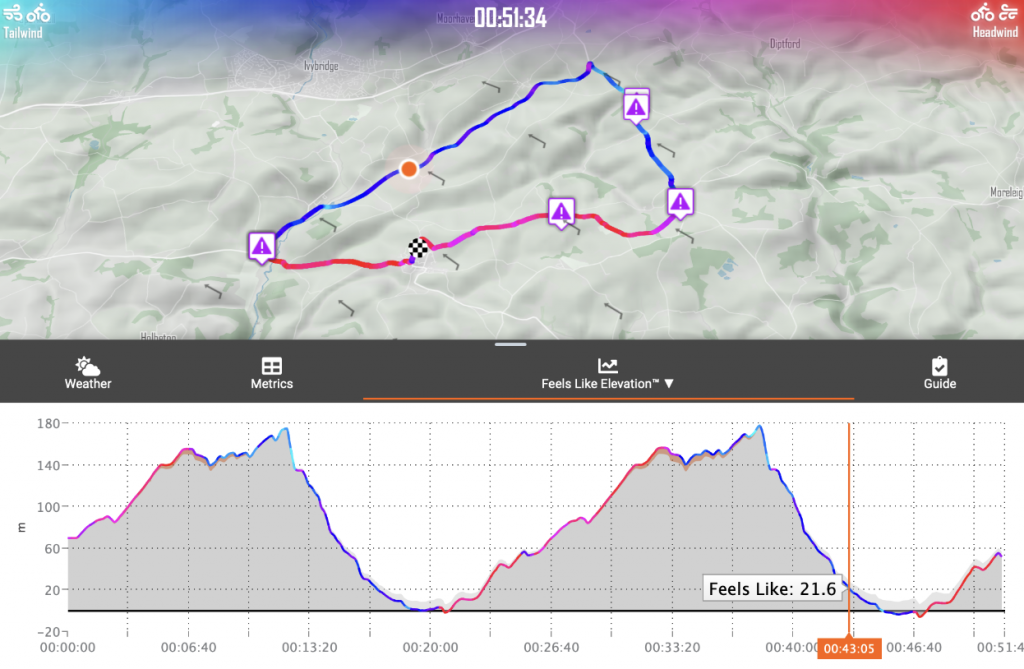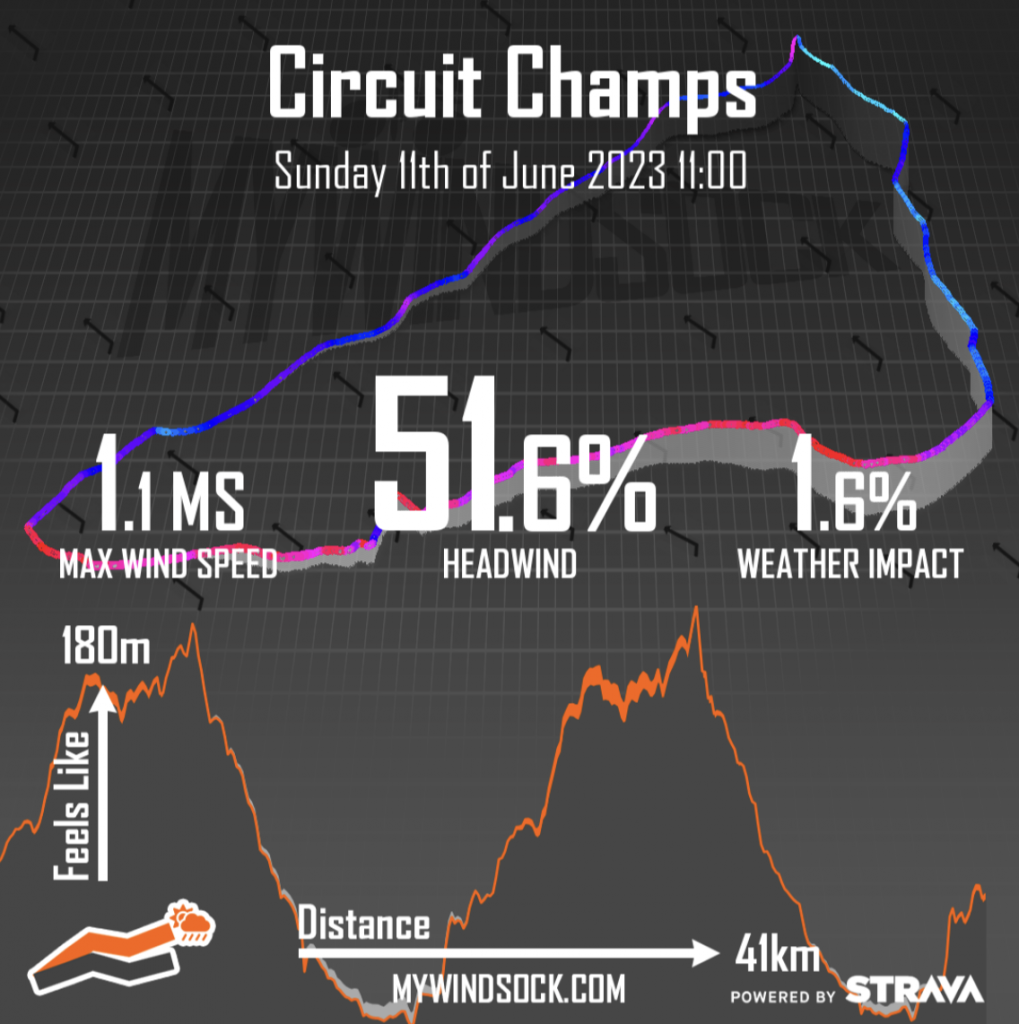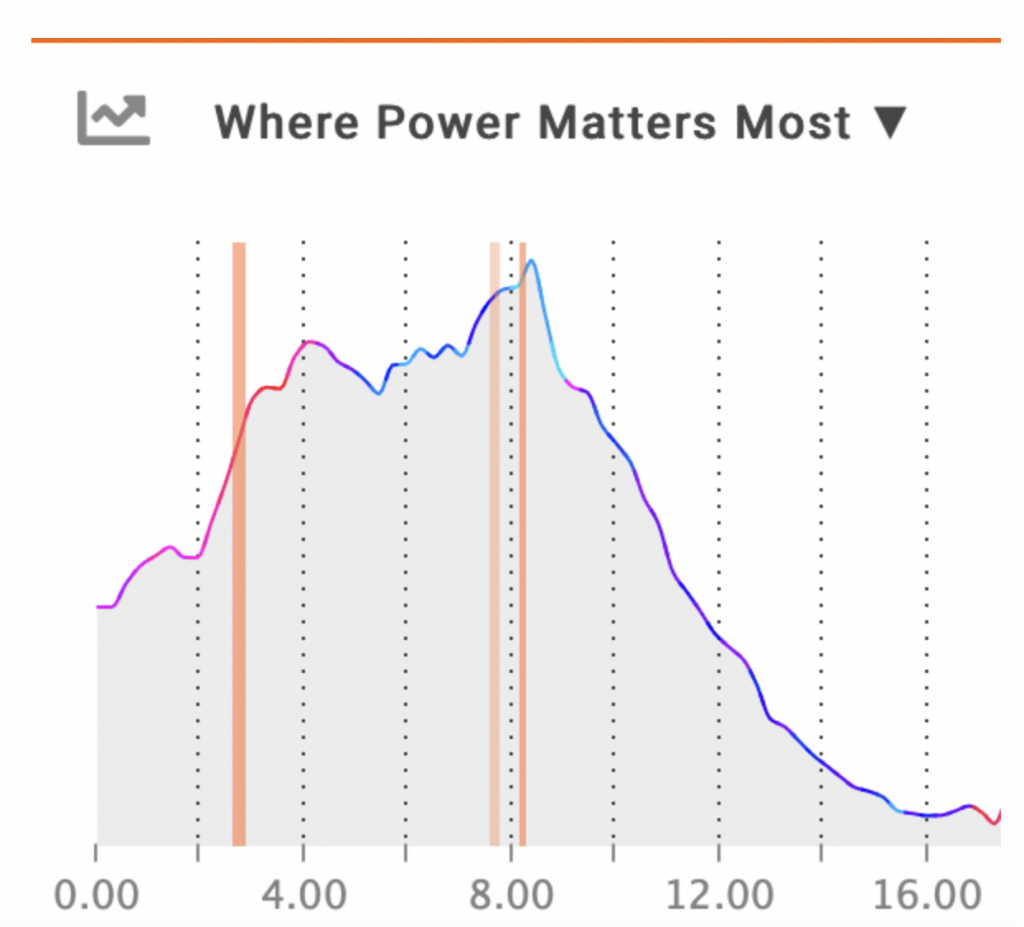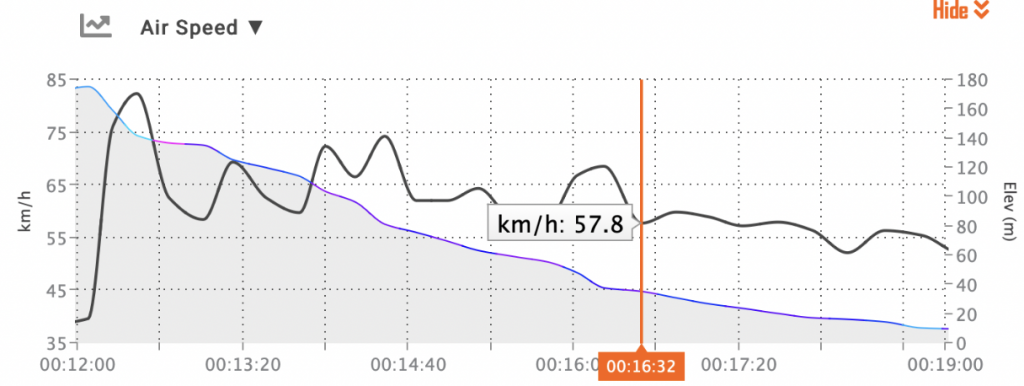On the 11th of June 2023, CTT’s national circuit championships are going to take place on the S3/25S(A) course in Devon. This is a rolling, technically challenging circuit where pacing and the weather will likely play a large role.

The course has around 240 m of elevation per lap and there are two laps. The danger of this course is in the first climb, riders that start too hard will blow their legs off for the remainder of the race and riders that don’t warm up properly will find themselves shipping unrecoverable amounts of time on the first ascent. The long descent each lap is usually tail wind or cross tail wind and will require riders at the pointy end of the field to be brave – facing very high speeds and those who remain in the aero bars will gain time on riders that have to sit up.
myWindsock forecast and course breakdown.

The forecast for the course can be seen here – where you can interrogate all key features of the course yourself. We have decided to focus on a few key elements here, namely the steep portion of the climb and the descent.
The Climb
Using myWindsock we can run an experiment which will locate portions on the course where power matters the most. These are the portions of the course where a rider will be moving slowly. There are three portions on this course, the largest of which is on the steep section of the climb.

The descent

Speeds get high on the descent, riders will want to get as aerodynamic as possible. At points, riders will approach 85 km/h air speeds, which with a tailwind could mean ground speeds of around 90 km/h – the top riders will be going FAST!
How can I use myWindsock to pace my effort?
Using myWindsock to pace a time trial can be a valuable tool in optimising your performance. Here’s a step-by-step guide on how to use myWindsock for pacing:
- Sign up and log in: Visit the myWindsock website and create an account or log in if you already have one.
- Set up your time trial: Enter the specific details of your time trial course as well as your personal numbers like power and cda. This information will help myWindsock generate accurate predictions and recommendations.
- Plan your pacing strategy: Based on the wind data, identify sections of the course where you will face headwinds or tailwinds. Adjust your pacing strategy accordingly.
Pacing a rolling course like this one can be tricky but it essentially boils down to a few factors. Climb hard, but not too hard, punch over the top and recover on the descents. That said, a little planning never hurts in a time trial and if you want to plan with the best in the business as used by World Tour riders and Olympic champions – click here to sign up.




 UK Time Trial Events
UK Time Trial Events